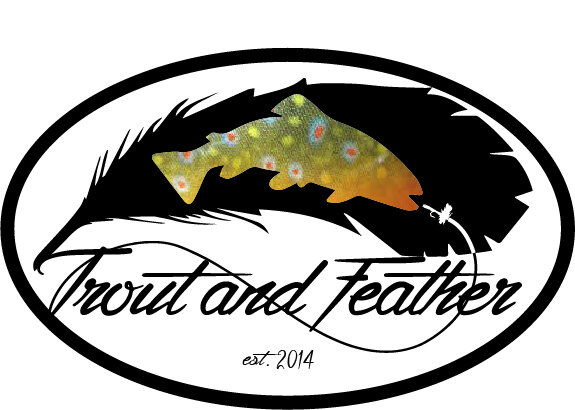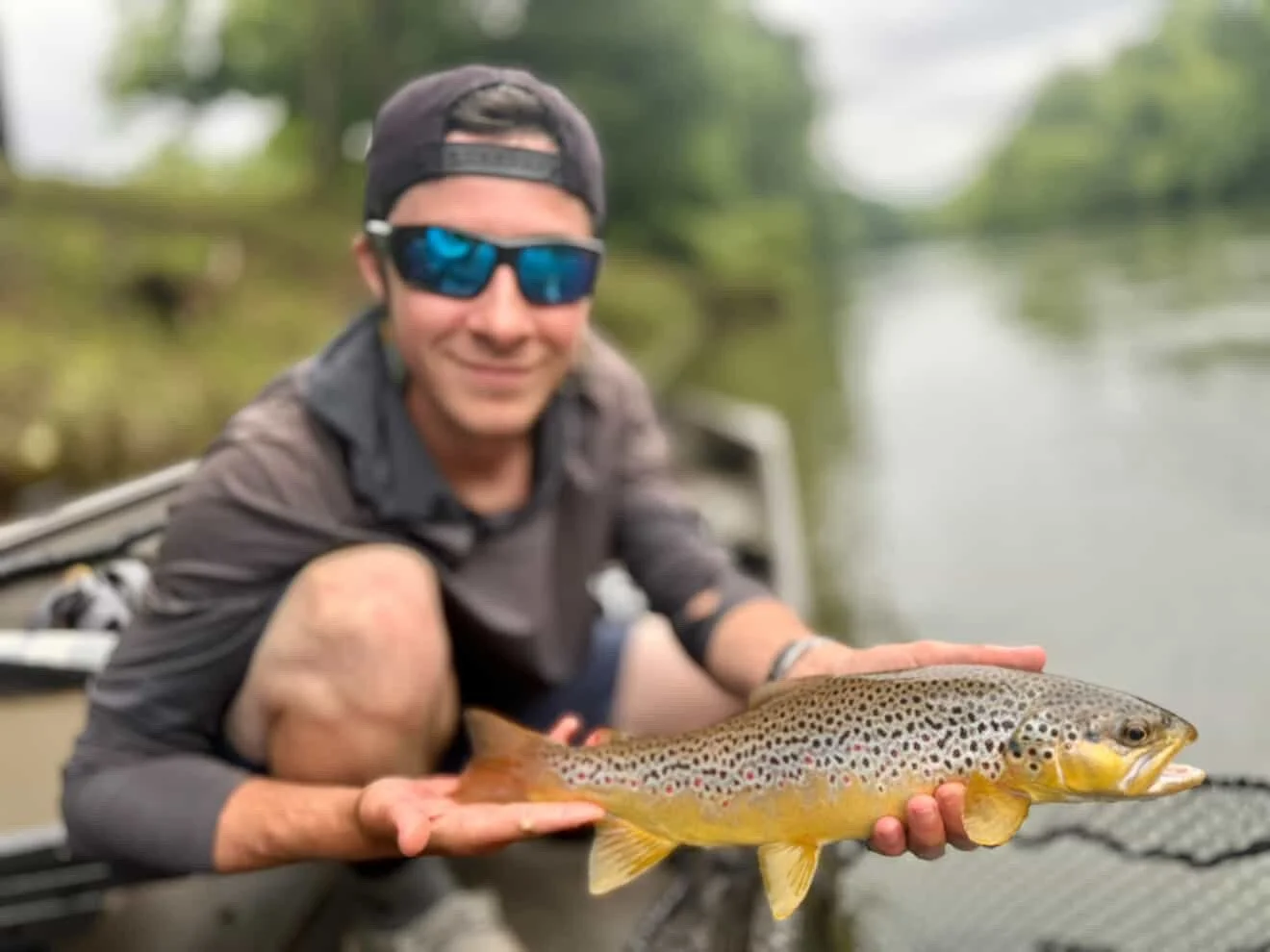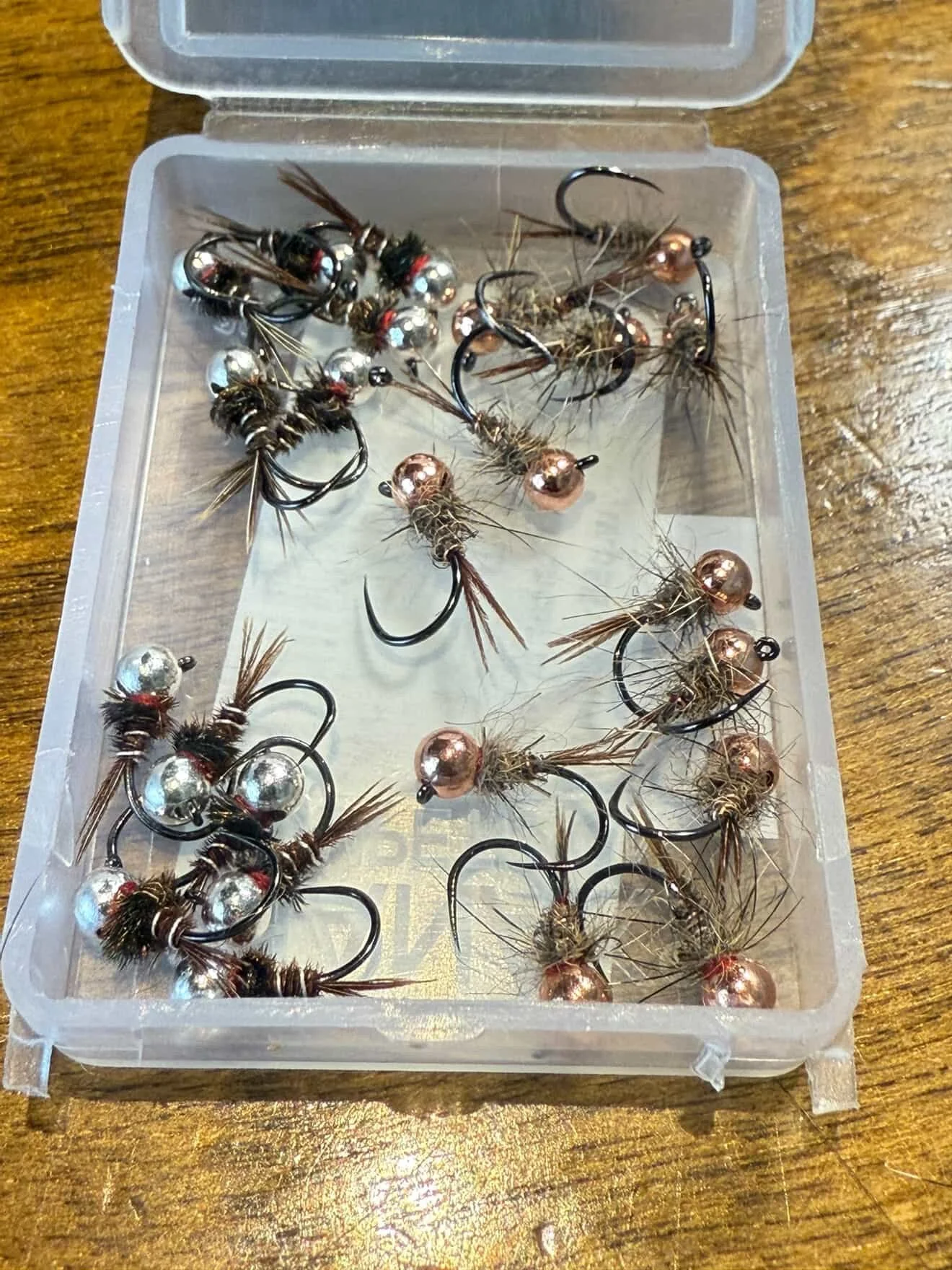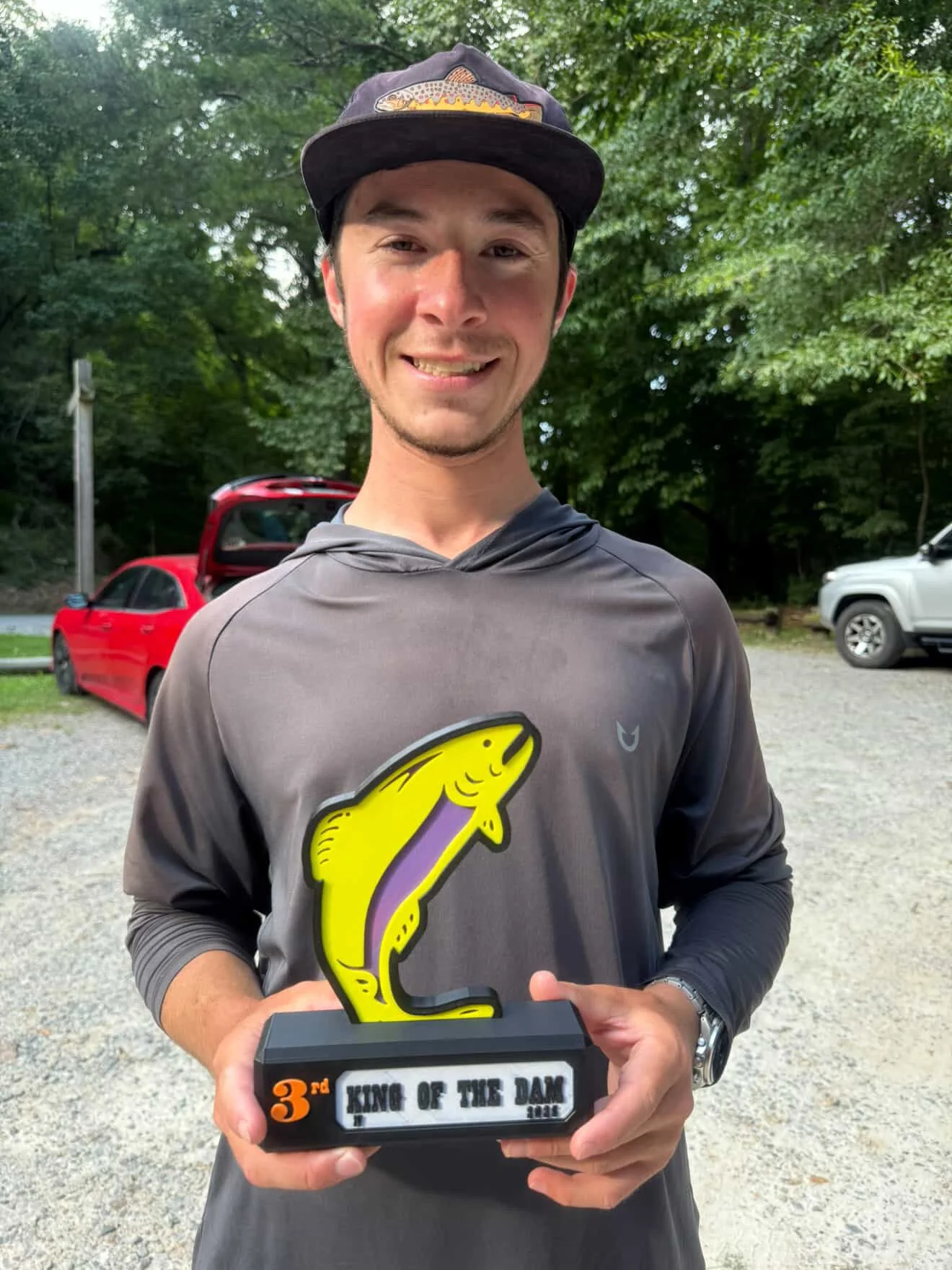By Myles Hartley
Leader System
After using the recommendations provided in this blog, you’re guaranteed to be all smiles and catch some brown trout like this!
To start off, each new day when I’m about to go hit the river, I like to check my leader. I use what’s called a micro leader in the Euro nymphing world. This type of leader is made up of light lines and is super sensitive. If there’s abrasions throughout the leader, I’ll just go ahead and trash it and put on a new leader. I like to make sure my setups don’t have any imperfections that could cause my leader to pop on a hook set. I most commonly am Euro nymphing, and my leader formula is typically:
6 feet of 6 pound test line
6 feet of 4 pound test line
3 feet of a 4x sighter material
Note: I don’t like tippet rings so I use a perfection loop to connect my tippet to my leader, and then tie my flies to my tippet.
Here’s a look at the leader system Myles uses with a 10’ fly rod. When possible, he uses two flies attached to his tippet.
Here’s some of Myles’ favorites bead head nymphs, hot off the vise!
Favorite Flies
Over the years there have definitely been a few flies that have stuck out as the most productive. For me, this has a direct correlation to making a fly my favorite! My top flies, in no particular order:
Hare’s Ear nymph
Pheasant Tail nymph
France Fly nymph
I have fished with Hare’s Ears and Pheasant Tail nymphs for many years now. They were some of the first nymphs I learned to tie and so they were the first ones I had lots of success and confidence with. Over the years, those patterns have been some of my go-to flies. It’s only been here recently that I wanted to add another fly to my collection. I ended up creating a fly with materials I had, that I later found out is what many people have known as a France Fly. I started fishing this fly frequently and it turned out to be a hit.
I tie all three patterns in multiple different variations and they’re consistently productive. No matter where I go to fish for trout now, I have a Hare’s Ear, PT, and a France Fly in my box!
Finding trout is one of the toughest parts of fly fishing. Everytime you catch a fish, take notice of the water, which helps you build connections for the next time on the water!
Where to find fish
Figuring out where you’re going to fish is a huge part of catching or not catching fish. We want to make sure we’re fishing where there are going to be fish. My approach when I’m going to a spot I’ve never fished before is to typically look down off the water from some type of vantage point. Commonly, the stream I’m fishing has some sort of river bank that is elevated enough that I can look down on the water. This helps me to get a “read” on the water.
By watching for a few minutes, I can see if any fish are hitting dries on top of the water, but more importantly to me, I can see where there are deep or even shallow pockets, fast or slow moving sections of water, if there are rocks creating runs, and whether or not I see fish moving around in those pockets. I was once asked by a friend, “Would I rather run or walk?” This relates to fishing, because I would rather walk…and trout are the same way! They want to expend as minimal amount of energy as possible while eating as much food as possible
The slowest moving section of water is the bottom of the water column. Many times, that’s where a trout will be. I frequently will catch trout where slow and fast water meet, but I typically need to make sure my flies are still deeper in the water column. If I know fish are in a run, but I’m not catching them, they either don’t want that fly, or I’m not getting down deep enough to them with the proper presentation. The presentation of our flies is crucial. We want our flies to be presented as naturally appearing as possible to fish. When we are making good drifts at the proper depths, we are increasing our chances of catching fish!
Myles Hartley, 24, turned a childhood love of trout fishing and camping into a career guiding anglers and selling his hand-tied flies nationwide — sharing his passion for fly fishing and euro nymphing with over 100 students so far.
By Myles Hartley
My name is Myles Hartley and I guide in Georgia and western North Carolina. Growing up as an outdoors enthusiast, trout fishing and camping were always the go to weekend activities. At about 12 years old, I was introduced to fly fishing and to say the least, I was hooked! Shortly after I got a fly rod and fly tying set up, and the rest is history. A little over a year later, I was introduced to euro nymphing, and I have been perfecting my craft ever since. I have been very fortunate to have met and learned from some incredible anglers helping me hone my skills to what they are today.
Now, I guide out of a local shop and sell my flies all over the country. I’ve helped over a 100 people be able to catch fish on a fly rod and many of those people I was able to teach euro nymphing . It has been an awesome journey being able to share what I love with so many people, and it is something I look forward to continuing on with for many years to come!
Contact me via Facebook, Instagram, or email me with questions or to book a day on the water:
Email: myleshartley@comcast.net
Instagram: Goingmileswithmyles
Facebook: Myles Hartley
The France fly is a top producing pattern for many anglers, especially in olive, brown, and black. Here is a video on a purple variation, tied by Tim Cammisa.





